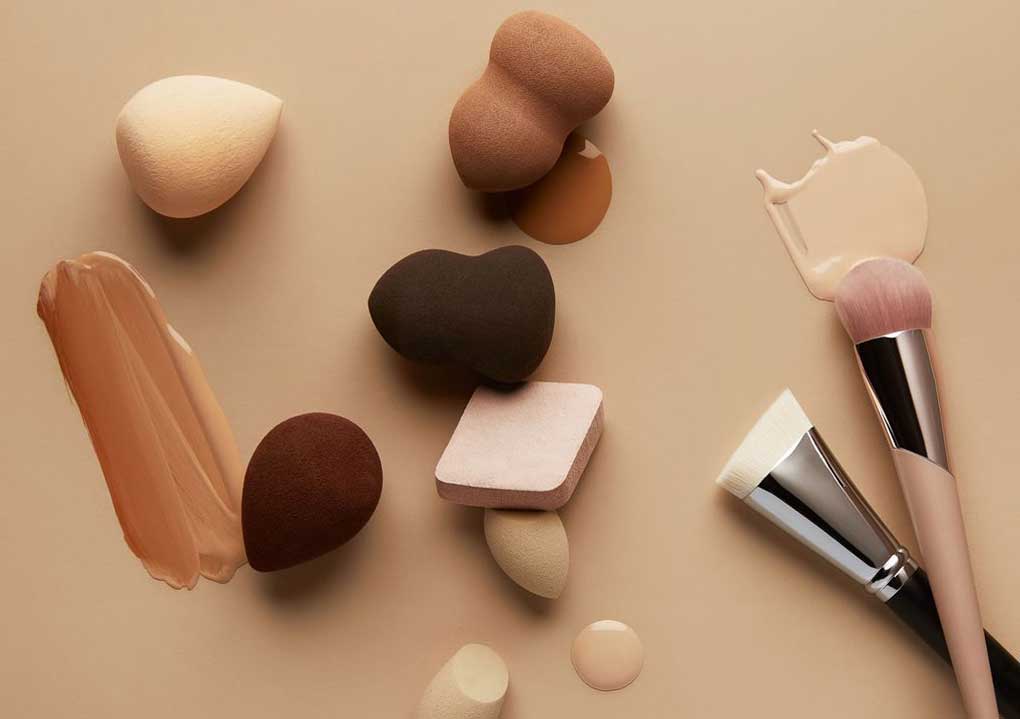All over the cosmetics world, indie beauty is on everyone’s lips. Not only the makeup but also the concept. Surprisingly, despite their worldwide success, these brands have not made their way through China yet. Why? It is due to several internal and external factors that prevent them from entering. You will discover that the moment you understand the Chinese culture, there is always an opportunity to seize. When indie beauty brands will notice it, they could actually dominate the Chinese beauty market.
Understand the Indie Beauty Ecosystem in China
In the West, these independent brands master the following key success factors: ownership, lifestyle, and community. They understand their target very well and can easily sell in their home market. But what happens when they try to enter China?
Current Indie Beauty Brands in China vs. Worldwide
A simple definition of an indie brand is an independent brand with a lifestyle and a community on its own. In a word, it describes emerging brands compared to luxury well-established beauty brands like Dior, Estée Lauder, or Guerlain. These legacy brands are often created by a celebrity (like Rihanna with Fenty Beauty and Selena Gomez with Rare Beauty) or a beauty expert. The founder often gets access to a strong community and qualitative insights from its followers.
In the West, these brands were made famous thanks to their disruptive model. They reinvented the textures, the products, and the communication campaigns. They changed the image we had about beauty and make it more friendly. How? They create a strong sense of belonging among their followers and sell specific products. A key differentiation is that they propose a full assortment from skincare to makeup and fragrance. Choose your battle. For example, Lipstick Lobby is 100% lipstick and Lemonhead is 100% shiny cosmetics.
What are the indie international beauty brands?
- Huda Beauty
- Milk Makeup
- Glossier
- Kate Von D
- Pony Effect
- Kosas
- The Balm
- And many more!
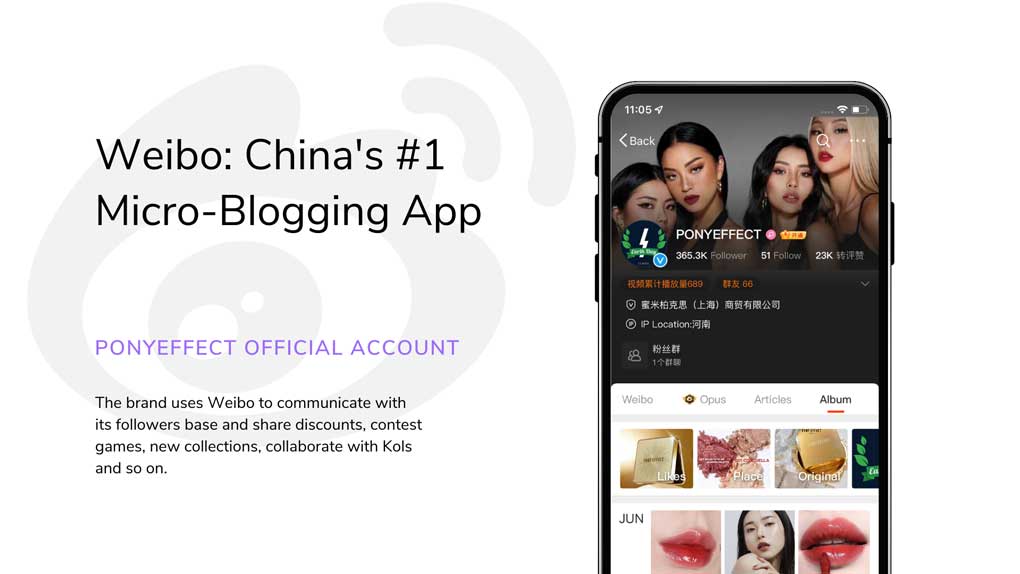
Do they sell in China? Actually, almost none of them. Only Korean brands like Pony Effect or Asian brands succeed in China thanks to their good understanding of Chinese culture.
What are the Challenges Faced by Indie Beauty Brands in China?
One big challenge that indie beauty brands face in China is the high cost of doing business. Compared to Western countries, China has a much lower threshold for what is considered a “mainstream” brand. This means that indie brands often have to compete with much larger and better-funded companies in terms of marketing and distribution.
Another challenge is the difficulty of navigating China’s complex regulatory environment. Indie brands often have to partner with Chinese companies in order to be able to sell their products in China, and these partnerships can be difficult to navigate. Additionally, there are many different government agencies that enforce different regulations related to cosmetics, so it can be difficult for indie brands to make sure they are compliant with all of them.
Appetite for Famous Luxury Brand
In China, beauty lovers tend to purchase from big brands. For Chinese consumers, a higher price always means higher quality. This is why luxury brands always have such success in this country. They tend to consider the products are the best.
Top 5 cosmetics brands with the most brand awareness among Chinese luxury consumers:
- Chanel
- Estée Lauder
- Dior
- Lancôme
- Shiseido
Chinese consumers will tend to favor beauty products that are the most expensive. They have both a high price and a strong brand awareness. By comparison, indie brands suffer from a lack of brand awareness in China and they practice small prices as all their image is based on the accessibility. Chinese consumers will trust indie brands less compared to luxury brands. The solution? Indie beauty brands have to educate consumers on their values and image.
China Traditional Beauty Stereotypes
In China, the idea of beauty is very fair skin and a skinny body. When you plan to enter China, you need to understand how important it is.
Fenty Beauty failed to enter the Chinese market mainly because the local consumers were not sensitive to the color-inclusive campaign. Indeed, the brand chose a model being Chinese with dark skin and a round face. It does not meet the beauty standards in China and was not quite well understood by local consumers.
In China, consumers want to achieve porcelain skin. They always look for whitening products in skincare and bright foundations in makeup. Luxury brands often create Asian-only shades like 00 or 01. These specific shades are very white and are the most successful in China compared to other shades.
Cruelty-Free Beauty Products
The main challenge faced by indie beauty brands is animal testing. They often stand for meaningful values like vegan or cruelty-free products. For instance, Milk Makeup, Glossier and Rare Beauty were proud to attest on their website that they are not sold in China. Even Kate Von D Beauty is PETA certified and attests it is not available in mainland China.
Good news for indie brands: China decided to abandon animal testing. This is a great opportunity for European brands and especially French brands from now on. They can sell their products in China without actually testing them on animals. Indie brands have now their chance too!
Indie Brands Strategies in China
There are a number of indie brands that are doing quite well in China. Despite the competition from big brands, these indie companies have found ways to thrive and grow their businesses. What strategies do they use that sets them apart? And what can other brands learn from their success? Let’s have a look at two of them.
Fenty Beauty Case Study – An Indie Brand that Turned Global
Fenty Beauty was created by Rihanna in 2017. It used to be an indie brand that turned global since it is now owned by the LVMH group. The success of the brand was huge. Fenty reached 500M euros of sales in the first year. The communication was built around inclusivity, especially with the 40 shades foundation assortment.
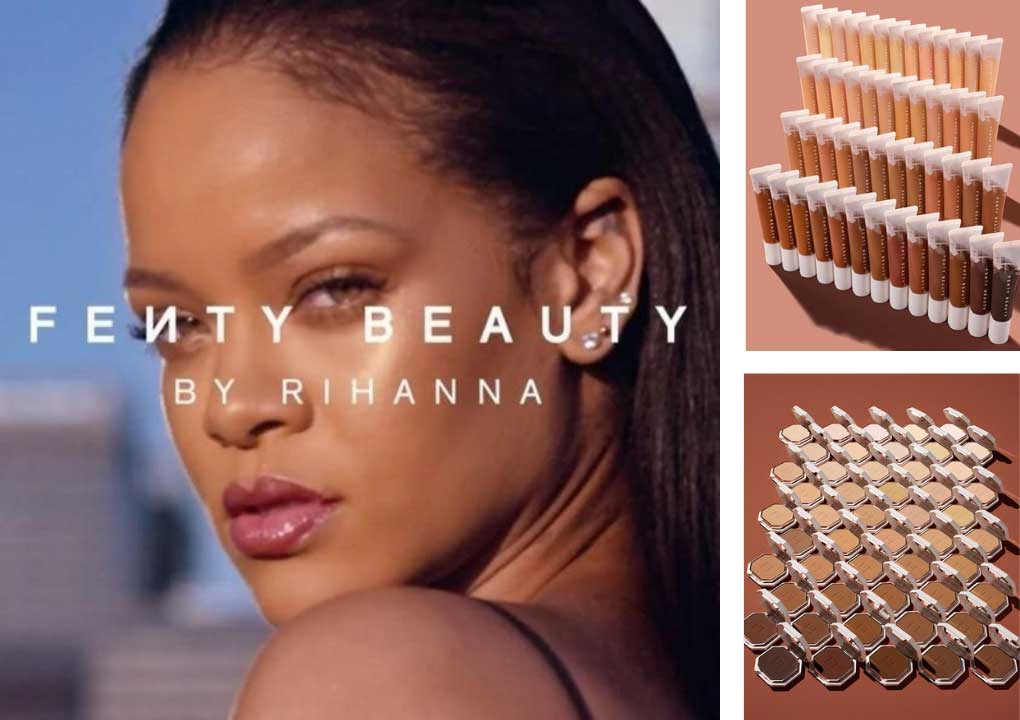
Rihanna decided to sell in China. The challenge could have been taken up by Fenty Beauty. At that time, Rihanna was ranked 1st as the most influential international singer in China. The brand even signed a partnership with Lin Yun, a famous Chinese actress. She has 10 times more followers on Weibo than Rihanna. What was the problem then? The extra range of foundation is appealing in the USA and in Europe due to the numerous skin colors. In China, only a small range of colors are appealing as we explained. On Little Red Book, 30K posts asked whether Asian shades were available.
Milk Case Study – An Indie Brand Attached to its Values
Milk Makeup was created in 2014. In Europe, the brand is sold in the main retailers like Sephora and meet with great success. The expansion is profitable and Milk Makeup had a vision for Asia. But what was the problem then? China is providing animal testing for imported beauty products and Milk is claimed to be cruelty-free.
The brand decided to start in Asia, by the other profitable market: Korea. The strategy of the indie beauty brand was to partner with a local group called AmorePacific. This small investor is a key opportunity to help the brand enter the South Korean marketplace. In China, the brand is not available due to animal testing issues but surprisingly gets several accounts on Chinese social media.

Today, Milk Makeup gets a WeChat account. The brand publishes newsletters and campaigns to connect with its Chinese community. It is a great way for the brand to target Chinese travelers and local beauty lovers. Surprisingly, the products are available on Tmall and local consumers can even benefit from imported products by requesting a daigou.
You are interested in these brands’ strategies? We will explain everything!
How to Effectively Market Your Indie Beauty Brand in China?
There are a few things to consider when marketing your indie beauty brand in China. One of the most important is localization. Beauty products and trends vary greatly from country to country, so it’s important to tailor your marketing strategy to Chinese consumers. In addition, you’ll need to use WeChat and other social media platforms popular in China to reach potential customers.
Another key factor is understanding the competitive landscape in China. There are many domestic and international brands competing for market share, so you’ll need to differentiate your brand and create an effective branding strategy to set yourself apart from the competition. Finally, it’s important to have a good distribution network in place so that your products can be easily accessed by consumers
#1 Social Media: Boost your Image
Undoubtedly, social media marketing is perfect for any indie beauty brand looking to succeed in China. First and foremost, with Chinese consumers becoming savvier and more discerning than ever before, they are increasingly turning to social media platforms such as WeChat and Red in order to learn about new brands and products. In China, 90% of women look for information online before buying a cosmetics product. They always browse and go through the brand’s social media account to know more about the history, the products, and the communication campaign. If you want to be visible in China, you need to have social media accounts.
Secondly, given the vast size of China’s population, reaching potential customers through traditional means such as television advertising or print media can be prohibitively expensive for many indie beauty brands. Social media marketing provides a cost-effective way to reach a large number of potential customers quickly and easily. Finally, social media platforms offer a wealth of data that can be used to better understand customer preferences and target them more effectively with future campaigns.
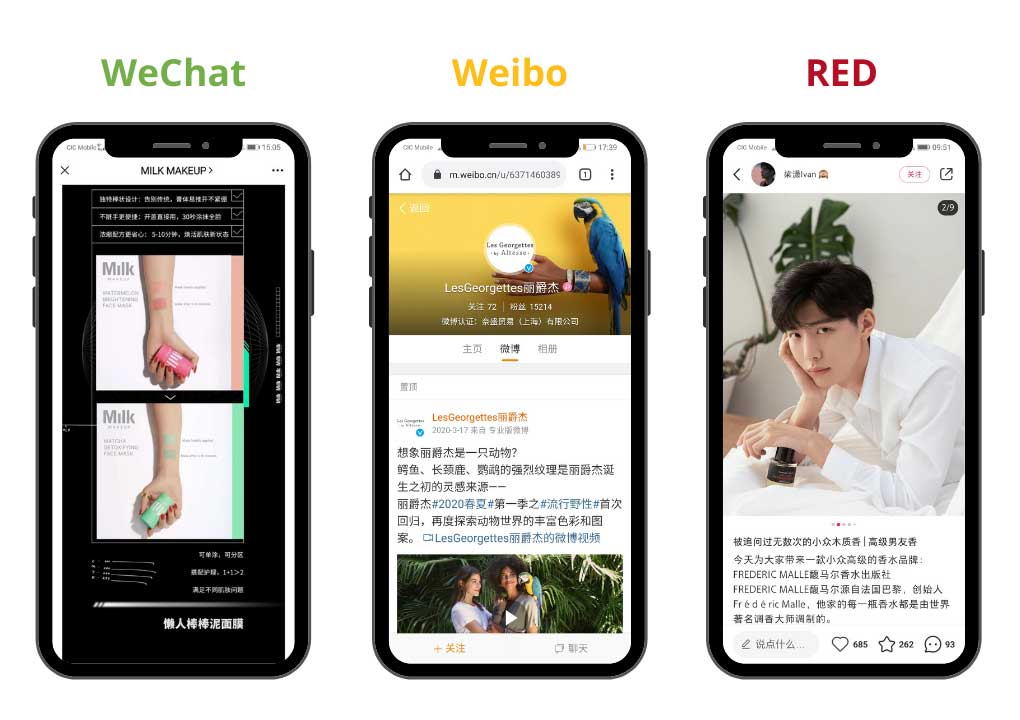
What chinese social media should your indie brand have a presence on?
- WeChat: This is the most used social app in China with 1.2 billion active users. They use this app to send messages, make calls, share moments, find information, and purchase. You need to create an H5 brochure and an official WeChat account to allow Chinese consumers to find your brands. This is a great tool to engage with your chinese target audience by sharing “newsletters” for instance.
- Weibo: Chinese consumers often consider that if a brand does not have a Weibo account, it does not really exist. This social media gathers 523 million active users and 82% of Weibo users are shopping online. This is a great opportunity to increase your brand awareness and the conversion rate in the meantime.
- Little Red Book: This social media is often compared to Instagram, especially with pictures and qualitative content. On RED, 80% of the users are women. You can easily target women’s beauty lovers by creating an account and sharing qualitative content on this social media. The relies on user reviews of products and brands, and this makes it a great resource for indie beauty brands in China looking to build up their reputation. Because the app is so popular in China, having good reviews on The Little Red Book can be really beneficial for brands looking to attract new customers.
#2 KOLs & Influencers: Build a Community
In China, more than 90% of Chinese girls are influenced by online trends. They always check beauty news and search for product recommendations. For indie brands, the community is a key success factor. You can use the following tools to build an audience around your brand.
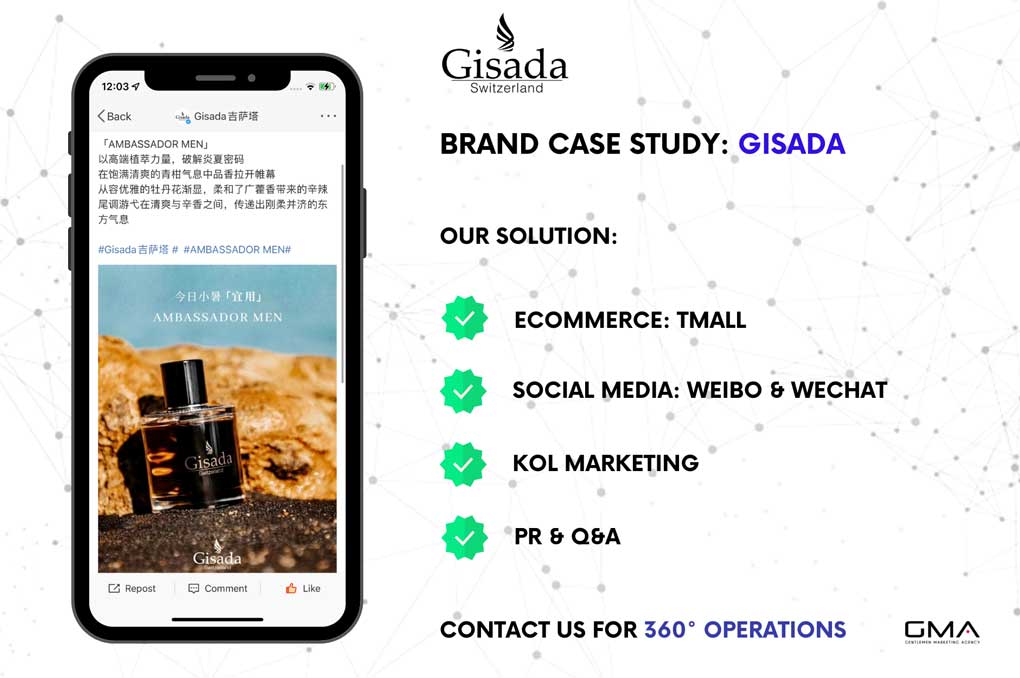
How to build a community when you do not have followers in China?
- KOLs: Key Opinion Leaders are a great way to increase your brand awareness in China. These people often possess an important community and love to share their insights with their community. For example, when Austin Li talks about lipstick in positive terms, it is always sold out the same day.
- KOCs: Key Opinion Consumers have a smaller community than KOCs but can help you to have a higher ROI. Chinese consumers turn to small influencers now because they want more authentic content. They also have the feeling they will be pioneers by buying a brand new product that they are the first ones to know.
- Beauty Magazines: Beauty lovers used to read these magazines. It is both informative on products components but also on recommendations for new brands
- Baidu Q&A: Baidu is the first search engine in China with 70% of online queries. They decided to create a Q&A section where the Chinese can share their opinion on specific topics. This is a great way to target Chinese beauty consumers as they often read information and build their future purchase intentions there.
- Zhihu: This social media is a success in China. Chinese consumers can use it as the Baidu Q&A by sharing opinions and comments.
#3 E-Commerce: Sell your Products
The question of distribution is very important in China. Local consumers need to find you if they actually want to buy your products. There are several possibilities for you to sell in China. Obviously, we can remove the possibility of developing your own store when you are a small brand because such a store will be profitable only after 1 or 2 years.
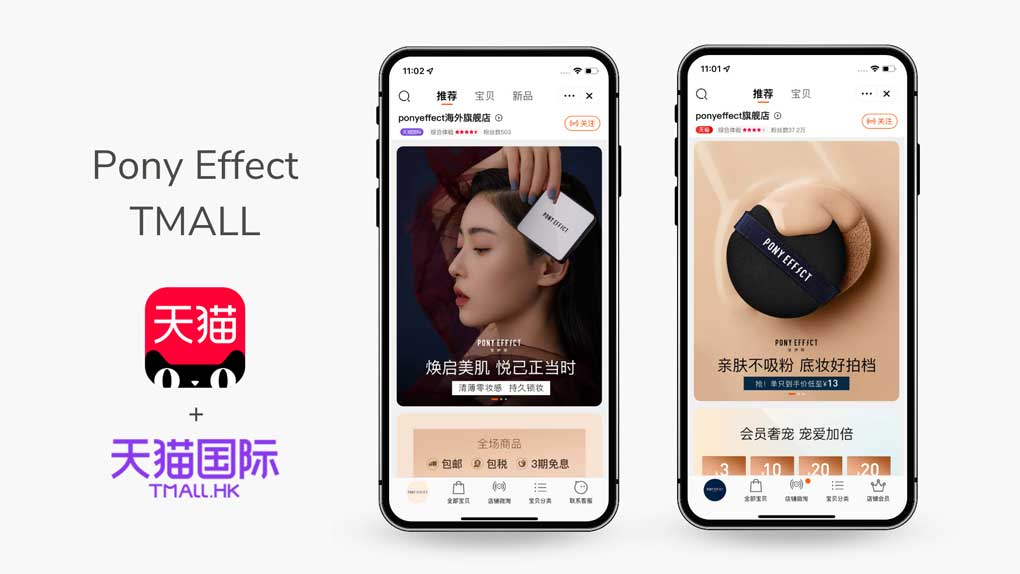
How to distribute your products in China when you are an independent brand?
- E-commerce: For the social media we mentioned earlier like WeChat and RED, you do not have only to share content… you can actually sell on it! On WeChat, you can create a mini-app linked to your website to generate sales. On Little Red Book, a marketplace has been created to enable users to buy products they like.
- CBEC: This strange word stands for Cross Border E-commerce platforms. In a word, it is a possibility for you to sell in China without having a Chinese license. For instance, you have Tmall or JD which created their own CBEC platforms to enable international brands to sell more easily in China.
- Multi Distributors: Chinese consumers love to get access to a wide product offering. You can work with a multi-distribution partner to benefit from their logistics service and secure payment device. For example with Tmall B2D, which stands for Business to Distributor, you can get access to 85K distributors.
Meet a Local Agency for Cosmetics Brands in China

From social media to distribution and lead generation, a local agency is the best partner you can have. At Gentlemen Marketing Agency, we help your brand to perform in China thanks to our +70 experts in digital marketing. You can contact us and we will further discuss your project.

